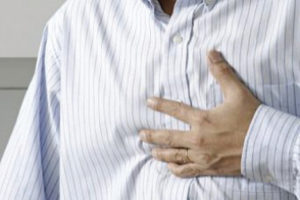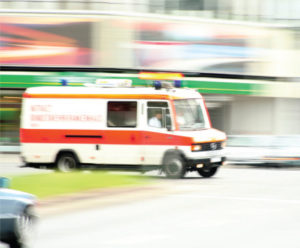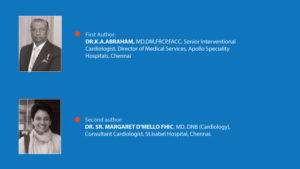Heart attack is a vague term for the general public, evenmore so for the doctors. it encompasses a spectrum of involvement of the heart, mainly the left-sided pumping chamber of the heart (Left Ventricle) by a block occurring in the coronary arteries. It may be so serious to cause a cardiac arrest and sudden cardiac death or it may be so trivial and asymptomatic that the patient may ignore it. At a later stage, when the patient is told that he had a heart attack, he may not recall any such incident.
Any heart attack is serious. Various terminologies are available for doctors to classify the heart attack and also to assess the degree of risk involved for further complications to any given patient, with increasing severity of heart attack. By and large, the malady is termed myocardial infarction due to blockade of a coronary artery by various mechanisms, very frequently by a clot (thrombus) in the artery. Depending on the location and severity of the block and the amount of heart muscle it supplies, the clinical condition of “acute coronary syndrome” emerges.
Patients’ survival and the impact of the block on the heart depends on how quickly we respond to it. It is a challenging situation; it is a matter of life and death. Various effective medications and methodologies are available to treat the condition and make the patient completely well, provided a timely action is taken by the patient, the hospital and the physician/cardiologist. Time is the essential, critical and vital factor in the success or failure of the treatment. Experienced physicians/cardiologists know fully well about the treatment modalities; hence this communication is meant for the general public (the victims of heart attacks) to understand and adhere to the recommendations which have emerged in the last three decades by various clinical studies and research on the subject.
depends on how quickly we respond to it. It is a challenging situation; it is a matter of life and death. Various effective medications and methodologies are available to treat the condition and make the patient completely well, provided a timely action is taken by the patient, the hospital and the physician/cardiologist. Time is the essential, critical and vital factor in the success or failure of the treatment. Experienced physicians/cardiologists know fully well about the treatment modalities; hence this communication is meant for the general public (the victims of heart attacks) to understand and adhere to the recommendations which have emerged in the last three decades by various clinical studies and research on the subject.
If “time” is the essential factor and the lynchpin for success, how do we save time to get to the target (the appropriate treatment)? This needs constant education of the people through media, newspapers and television. The first step is the awareness and recoginition of an impending heart attack by the patient; usually a sense of denial occurs in almost every patient. A strong suspicion of a heart attack should be considered as a heart attack unless proved otherwise in a hospital. Once the ‘recognition of the problem’ is over, many logistic difficulities are encountered. Where is the hospital? Which hospital to go to? Which doctor to consult? Depending on the geographical location, these logistics should have been studied by every family prior to the emergency of a heart attack. Anyone can get a heart attack anytime; once this fact is understood, the next step (the hospital) can be reached without wasting any time.
Let us turn to the treatment aspect in the hospital. The focus is on immediate restoration of blood flow through the blocked coronary artery. Basically there are two methods, one being thrombolysis (fibrinolysis) by giving the medicine through a vein. Various medications are available; at present the most popular and commonly used agents are tenecteplase (TNK) which can be given in a few seconds, in a 30 – 40 mg dose, with a cost of about Rs. 30,000 to 40,000, and streptokinase, which can be given in half an hour to one hour, with a cost of about Rs. 3000. The choice of these agents is to be decided judiciously by the doctors depending on many factors, including cost.
The second method is ‘primary angioplasty’ done in an advance cardiac centre in the cardiac catheterisation laboratory by a cardiologist experienced in primary angioplasty. The time factor and cost are major considerations. If the delay to get this treatment is more than sixty minutes, after the first medical contact, the first method (thrombolysis) is preferred in a less advanced hospital by a team experienced in thrombolysis. A physician nurse team is sufficient in a hospital with 24-hour emergency services and a coronary care unit. Here again, the delay should not be more than 30 minutes once the patient reaches the hospital. Once timely thrombolysis is done, the patient can be transferred to a cardiac centre within three to twenty-four hours. This is known as the ‘pharmaco invasive’ treatment, which perhaps is the most suitable method in our country, unless an advanced cardiac centre is available where a primary angioplasty is possible within a time frame of 60 minutes after the first medical contact.
Very few centres are available in our country for primary  angioplasty except in the cities. The centre should have a modern emergency department with excellent triage system i.e deciding the order of treatment of patients, and round the clock availability of trained cardiac catheterisation team (cardiologist, nurses and a radiology technician). Though many studies have shown the supremacy of this method in some Western countries, this is a difficult task to achieve in our country in the near future, except perhaps in the major cities. The traffic condition of our major cities will be a real hurdle and deterrant. The final results of both these methods (Thrombolysis and primary angioplasty) are similar—with minor variations.
angioplasty except in the cities. The centre should have a modern emergency department with excellent triage system i.e deciding the order of treatment of patients, and round the clock availability of trained cardiac catheterisation team (cardiologist, nurses and a radiology technician). Though many studies have shown the supremacy of this method in some Western countries, this is a difficult task to achieve in our country in the near future, except perhaps in the major cities. The traffic condition of our major cities will be a real hurdle and deterrant. The final results of both these methods (Thrombolysis and primary angioplasty) are similar—with minor variations.
While so much importance and emphasis are given to the time factor, perhaps the main time factor lies with the patient to reach the hospital without delay. Once the symptoms start, every minute is important. It is said,’ time is muscle’ and hence it is imperative to reach the hospital for early treatment to save the heart muscle. The first hour after the heart attack is referred to as the ‘Golden Hour,” as restoration of blood flow within this time saves the heart muscle. If the blood supply in the blocked artery to the heart is restored within three hours, only moderate benefit is achieved and some benefit if done within twelve hours. Beyond twelve hours, it may be an effort in futility. However, with so many mushrooming hospitals and catheterisation laboratories in India, one can be sure of getting timely help to manage this common disease which is easily treatable! If one could reduce the delay in seeking prompt medical assistance, the final outcome would be remarkable!

To subscribe to the magazine Contact Us





